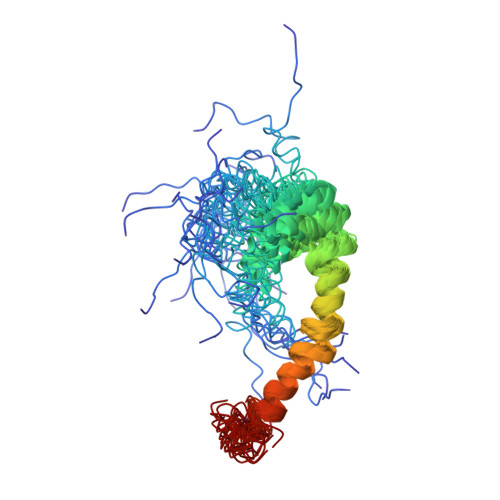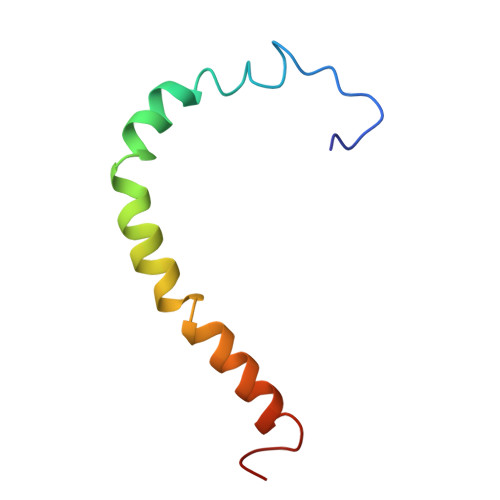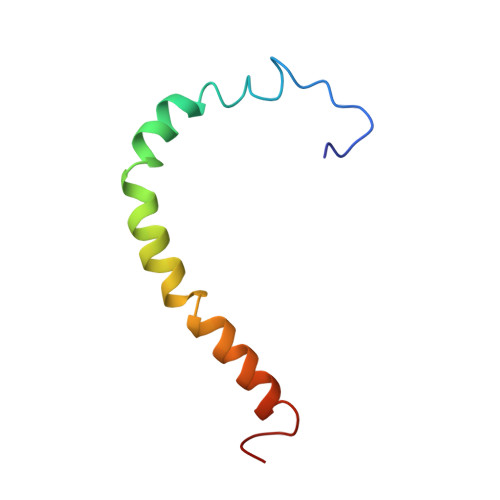Preserved Transmembrane Segment Topology, Structure, and Dynamics in Disparate Micellar Environments.
Langelaan, D.N., Pandey, A., Sarker, M., Rainey, J.K.(2017) J Phys Chem Lett 8: 2381-2386
- PubMed: 28492329
- DOI: https://doi.org/10.1021/acs.jpclett.7b00867
- Primary Citation of Related Structures:
2LOT, 2LOV, 2LOW - PubMed Abstract:
Detergent micelles are frequently employed as membrane mimetics for solution-state membrane protein nuclear magnetic resonance spectroscopy. Here we compare topology, structure, ps-ns time-scale dynamics, and hydrodynamics of a model protein with one transmembrane (TM) segment (residues 1-55 of the apelin receptor, APJ, a G-protein-coupled receptor) in three distinct, commonly used micellar environments. In each environment, two solvent-protected helical segments connected by a solvent-exposed kink were observed. The break in helical character at the kink was maintained in a helix-stabilizing fluorinated alcohol environment, implying that this structural feature is inherent. Molecular dynamics simulations also substantiate favorable self-assembly of compact protein-micelle complexes with a more dynamic, solvent-exposed kink. Despite the observed similarity in TM segment behavior, micelle-dependent differences were clear in the structure, dynamics, and compactness of the 30-residue, extramembrane N-terminal tail of the protein. This would affect intermolecular interactions and, correspondingly, the functional state of the membrane protein.
Organizational Affiliation:
Department of Biochemistry & Molecular Biology, Dalhousie University , Halifax, Nova Scotia B3H 4R2, Canada.


















